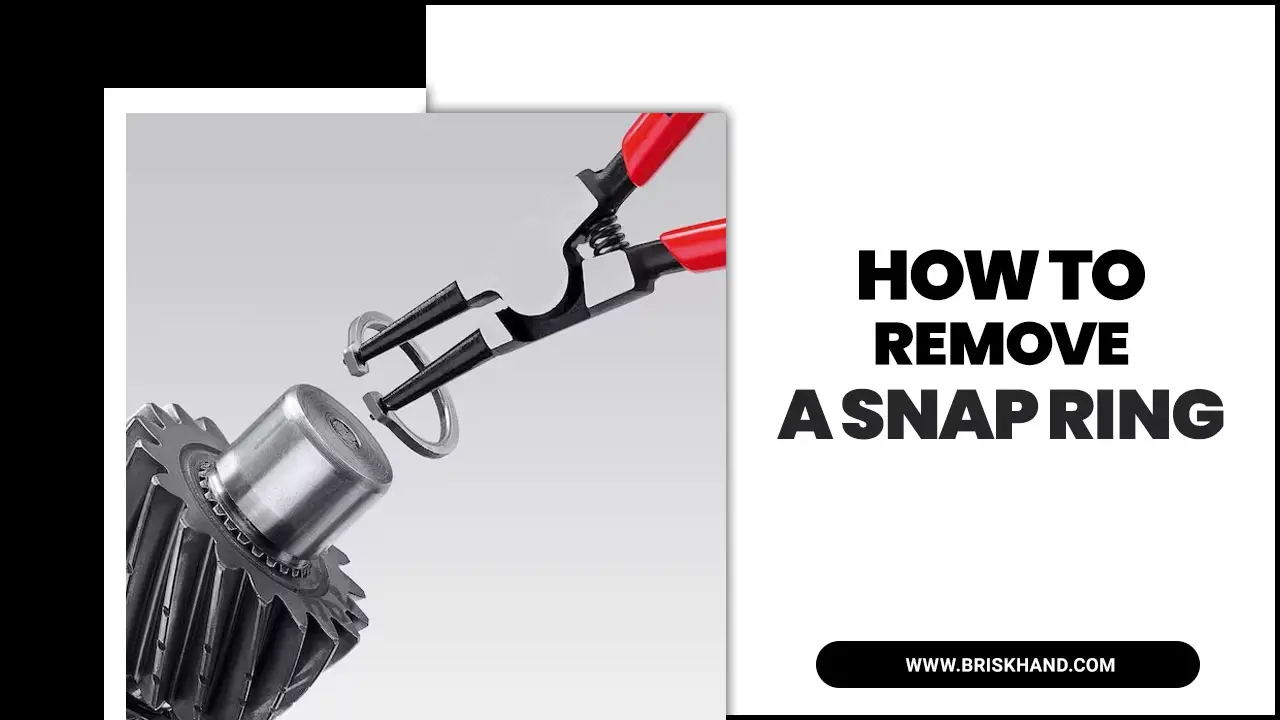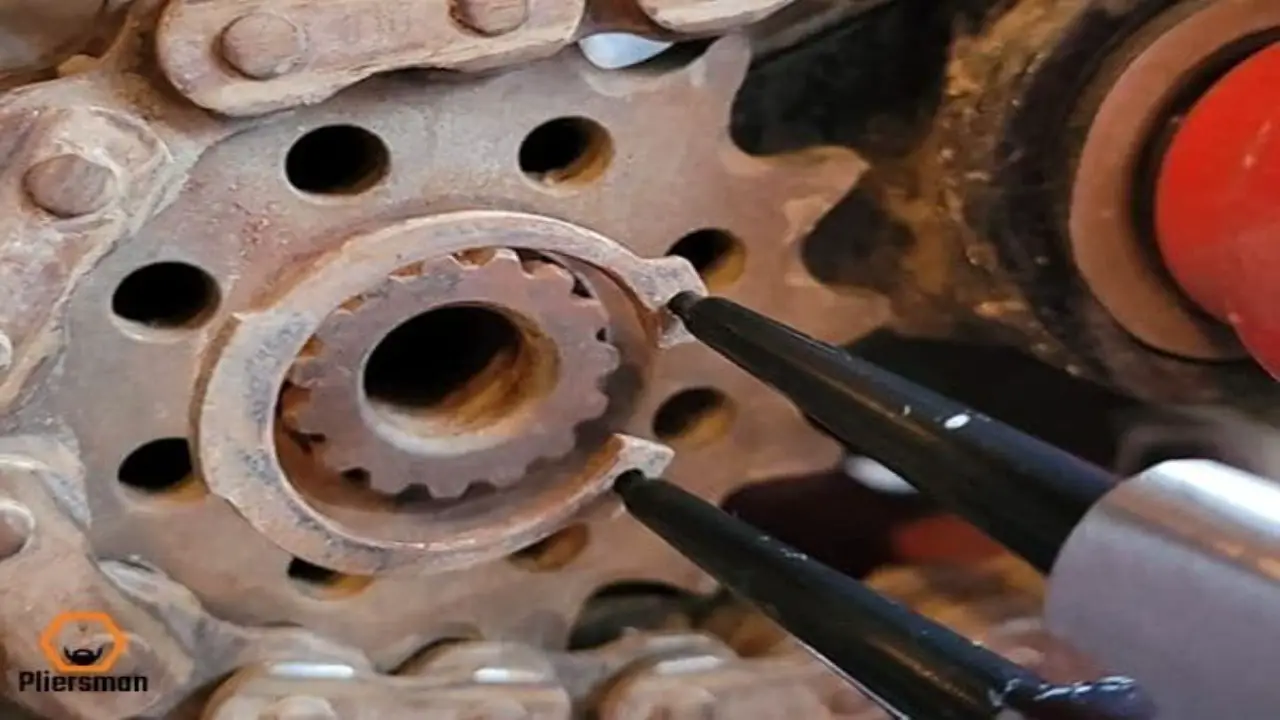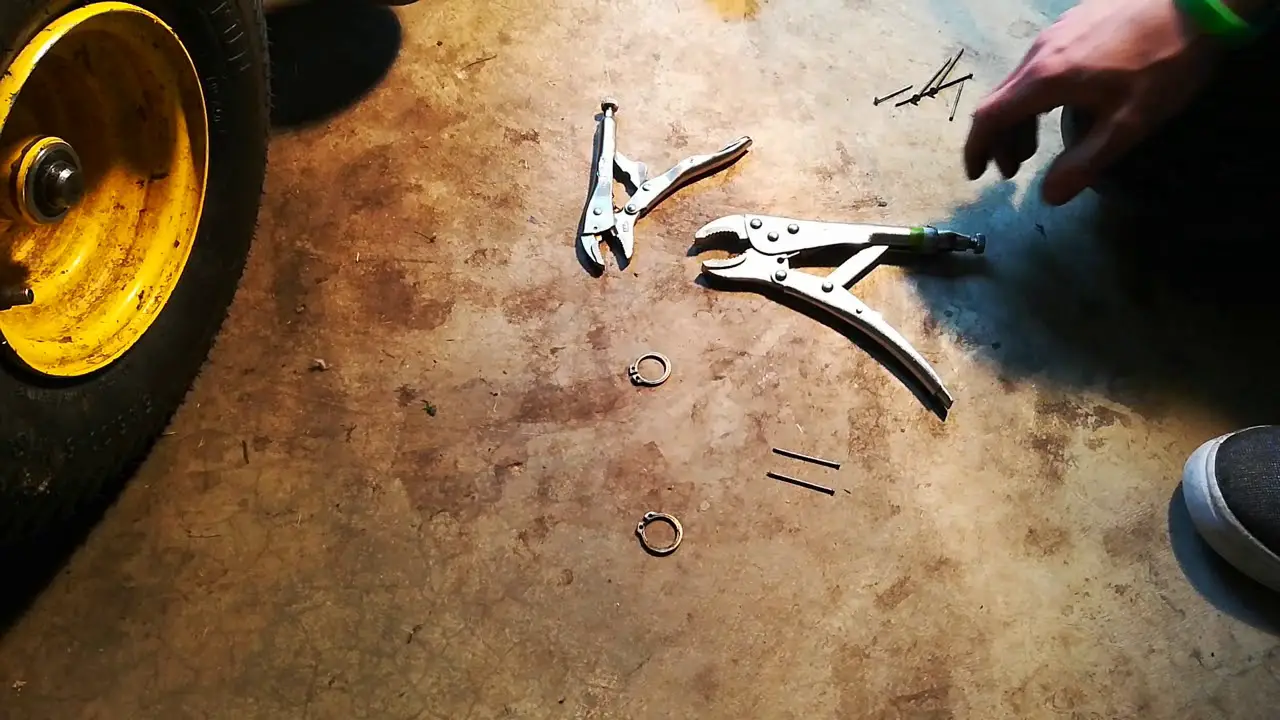Snap rings are small but essential components in many mechanical and industrial applications. They are circular and usually made of metal, with a small gap that allows them to be installed and removed easily.
Despite their simple design. Snap rings play a crucial role in holding various parts securely in place, preventing them from moving or coming loose.
However, there may come a time when you need to remove a snap ring for maintenance, repair, or replacement purposes. This seemingly simple task can quickly become frustrating and time-consuming without the proper knowledge and techniques.
Here, we will cover the different types of snap rings, the tools needed for removal, and step-by-step instructions on how to remove a snap ring. So without further ado, let’s dive into the details.

What Is A Snap Ring?

Snap rings are a common type of seal that’s handy on some types of valves and fittings. If they become damaged or fail, they can cause a leak or flood. Be careful not to damage the valve or fitting while removing the ring.
To remove a snap ring, use an appropriate tool – usually round and metal with a sharp edge – to pierce the seal from the inside out. Be sure to watch the video below for a step-by-step guide on removing a snap ring.
How To Remove A Snap Ring? – Details Guide

Removing a snap ring can be a tricky task, but with the right tools and technique, it can be done. Remember to exercise caution when removing a snap ring, as they can be spring-loaded and may fly off if not handled properly. Always wear safety goggles and work in a well-lit area to avoid accidents. Here step by step guide on how to remove a snap ring:
1.Gather Your Tools
Before you can remove a snap ring, it is important to gather the necessary tools. You will need a pair of snap ring pliers, which are specifically designed for removing snap rings.
These pliers have pointed tips that can fit into the small holes or gaps in the snap ring, allowing you to apply pressure and compress the ring. It is also helpful to have a clean work surface and good lighting to ensure that you can see what you are doing. Once you have your tools ready, you can proceed with removing the snap ring.
- Snap ring pliers
- Safety glasses
- Gloves
- Flathead screwdriver
2.Identify The Type Of Snap Ring

Identifying the type of snap ring is an important step in removing it. Snap rings come in various designs, including internal and external types. Internal snap rings are installed inside a bore or hole, while external snap rings are installed on the outside of a shaft or cylinder.
It is crucial to determine the correct type of snap ring before attempting to remove it, as different types require different removal techniques and tools. Some common methods for removing snap rings include using snap ring pliers, prying with a flathead screwdriver, or using a specialized snap ring removal tool. By correctly identifying the type of snap ring, you can ensure a safe and successful removal process.
3.Position The Pliers
To remove a snap ring, you will need a pair of snap ring pliers. Once you have the pliers in hand, the next step is to position them correctly. Place the tips of the pliers into the holes or notches on either side of the snap ring.
Make sure that the pliers are securely gripping the snap ring to avoid any slipping or damage. By positioning the pliers properly, you will have better control and leverage when it comes time to remove the snap ring.
4.Expand Or Compress The Snap Ring
To remove a snap ring, one method is to expand or compress the ring. This can be done using snap ring pliers, which have tips designed to fit into the small holes on the ends of the snap ring. To expand the ring, insert the tips of the pliers into the holes and squeeze the handles together. This will cause the ends of the snap ring to move outward, releasing it from its groove.
5.Remove The Snap Ring

To remove a snap ring, you will need a pair of snap ring pliers. These specialized pliers have small, pointed tips that can fit into the small holes on the snap ring. To remove the snap ring, insert the tips of the pliers into the holes on the ring and squeeze the handles together.
This will compress the ends of the snap ring and allow you to remove it from its groove or slot. Be careful not to apply too much force or squeeze too hard, as this can cause the snap ring to spring out and potentially cause injury. Once the snap ring is removed, set it aside in a safe place so that it does not get lost or damaged.
6.Dispose Of The Old Snap Ring
Once you have successfully removed the snap ring, it is important to dispose of it properly. Snap rings are typically made of metal and can be sharp, so it is important to handle them with care.
To dispose of the old snap ring, you can place it in a designated container for metal scraps or take it to a recycling center that accepts metal materials.
It is important not to throw the snap ring in the regular trash as it may pose a risk of injury to waste management workers. By disposing of the old snap ring responsibly, you can ensure that it does not end up in a landfill and can be recycled or repurposed instead.
Snap Ring Advantages
Snap rings, also known as retaining rings, offer several advantages in various applications. These small, circular metal clips are designed to fit into grooves on shafts or inside bores and provide secure retention of parts. One major advantage of snap rings is their ease of installation and removal.
- Raw material usage is very low in comparison with other retainers.
- These are much cheaper than other retainers.
- It helps to bypass complex machining like undercuts and threads
- Assembly is very quick
- Compact design
- No assembly training is needed.
- Easy to set up.
- Lightweight.
- Production cost is much less than the threaded alternatives.
Installation Of The Snap Ring

You can remove a snap ring efficiently with the right technique, even though it can be a tricky task. To remove a snap ring, you will need a pair of snap ring pliers. These specialized pliers have small tips that fit into the holes on the snap ring, allowing you to compress it and remove it from its groove.
- Locate the plug holes of the internal snap ring.
- Insert the plier into the plug holes.
- Squeeze the handle of the plier to bring the beaks of the plier together. The squeeze will reduce the diameter of the internal snap ring.
- Do not apply excessive force to the plier’s handle. You might cause damage to the snap ring. Apply only adequate pressure so you can remove or insert the snap ring from/to its place.
- Keep the snap ring inside the bore or shaft groove where you will place it to install. Keep the pliers steady.
- Release the pliers if you remove or install the snap ring perfectly.
How To Remove A Snap Ring Without A Tool

Removing a snap ring can be a tricky task, especially if you don’t have the proper tools on hand. Remember, removing a snap ring without a tool can be more challenging than using the appropriate tool for the job.
If you encounter any difficulties or feel unsure about proceeding, it may be best to seek professional assistance or invest in the proper tools for future use. However, it is possible to remove a snap ring without a tool by following these steps:
- Locate The Snap Ring Groove: The snap ring is typically located within a groove on the shaft or inside a housing. Identify the position of the snap ring groove before attempting to remove it.
- Use Your Fingers Or Pliers: If the snap ring is small enough, you may be able to remove it by using your fingers. Gently grip one end of the snap ring and pull it out of the groove. If the snap ring is larger or more stubborn, you can use a pair of needle-nose pliers to grip and remove it carefully.
- Be Cautious: When removing a snap ring without a tool, it’s important to exercise caution to avoid damaging the surrounding components. Take your time and apply even pressure when pulling out the snap ring to prevent any mishaps.
Conclusion
Removing a snap ring can be a challenging task, but with the right tools and techniques, it can be done successfully. Whether you’re working on a mechanical project or repairing an appliance, knowing how to remove a snap ring is a valuable skill to have.
By following the steps on how to remove a snap ring, you can safely and effectively remove snap rings without causing damage or injury. Remember to always exercise caution and wear protective gear when working with snap rings. With practice and patience, you’ll become confident in your ability to remove snap rings and tackle any project that comes your way.
FAQs
Is It Safe To Use A Snap Ring Removal Tool On My Engine?
Using a Snap Ring Removal Tool on your engine is always safe as long as you follow the tool’s instructions carefully. When using the tool, be aware of any sparks that may occur.
How Can I Determine If My Snap Ring Is Causing A Problem?
Snap rings can be easy to check for. Just remove the cover and push down on the centre of the piston. If it pops out quickly, then it’s likely that the snap ring breaks or poppies. If the snap ring falls out easily, it’s time to replace it as soon as possible.
What Are The Easiest Ways To Remove A Snap Ring?
The quickest and easiest way to remove a snap ring is by using vice grips and pliers. The simplest way to remove a snap ring is by using a Snap Ring Removal Tool.
Can You Reuse Snap Rings?
Yes, you can reuse snap rings as long as they are still in good condition and meet the necessary specifications for the application. It is important to carefully inspect snap rings for any signs of wear, damage, or deformation before reusing them to ensure proper functionality and safety.
What Do Jewellers Use To Remove Rings?
Jewellers typically use ring cutters or ring saws to remove rings. These tools allow them to cut through the metal of the ring safely and effectively without causing any harm to the wearer’s finger.

I am passionate about tools and electric work. I love finding new tools and experimenting with them.

